When it comes to interior decorations, first impressions count. An Italian door-knocker is a great way to impress visitors even before they’ve entered your home. They’ll know you’ve got what it takes when it comes to distinction in terms of culture, taste and an appreciation of history. In the modern age of calling bells, knocking on a door to alert people in the house to a visitor is all but a disappearing tradition.
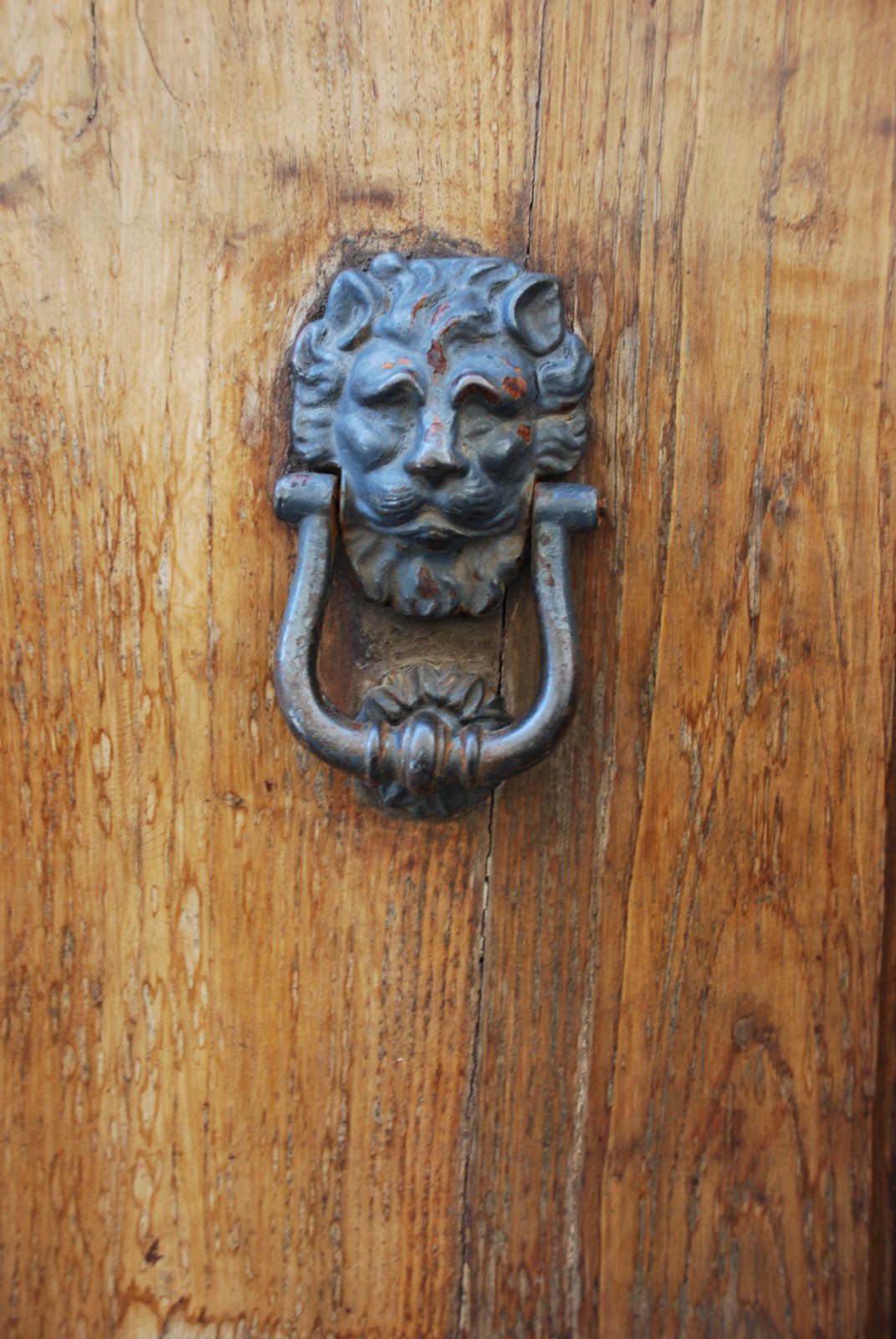 Lion’s head Italian Door Knocker
Lion’s head Italian Door KnockerBut door-knockers can be very charming and suitable, in case your home is a bungalow, a villa, or even if you simply have an imposing apartment door.
Italian door-knockers, made mostly in cast iron, bronze or brass, have a history similar to those found in old buildings all over Europe. These door-knockers may have had dark beginnings.
Origins of Door-knockers
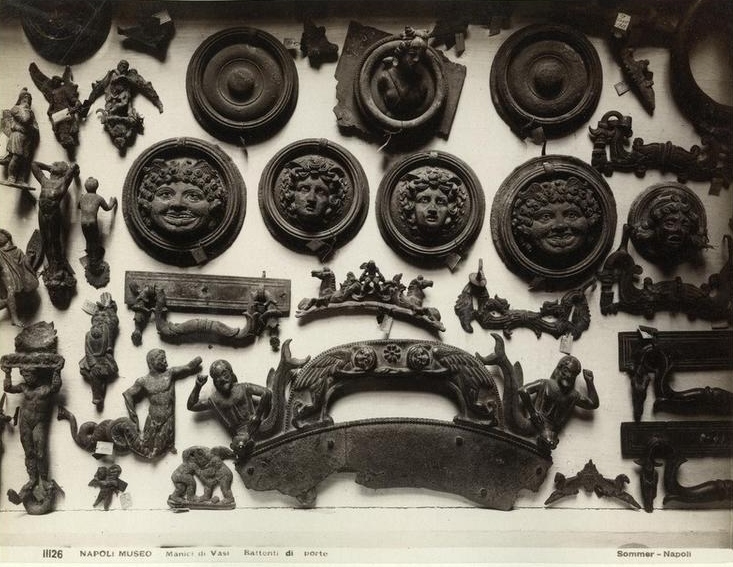 English: Giorgio Sommer (1834-1914), “Naples National Archaeological Museum
English: Giorgio Sommer (1834-1914), “Naples National Archaeological MuseumHandles of vases – Knockers from doors” (these are Ancient Roman objects found in Pompeii)
It is believed that door-knockers originated in ancient Greece, where slaves chained to doors answered visitors and the slave-chains were attached to metal rings on the door. Those metal rings on doors continued into the Roman empire and other civilizations. Gradually the base that held the ring became more ornate, giving us the door-knockers we see today.
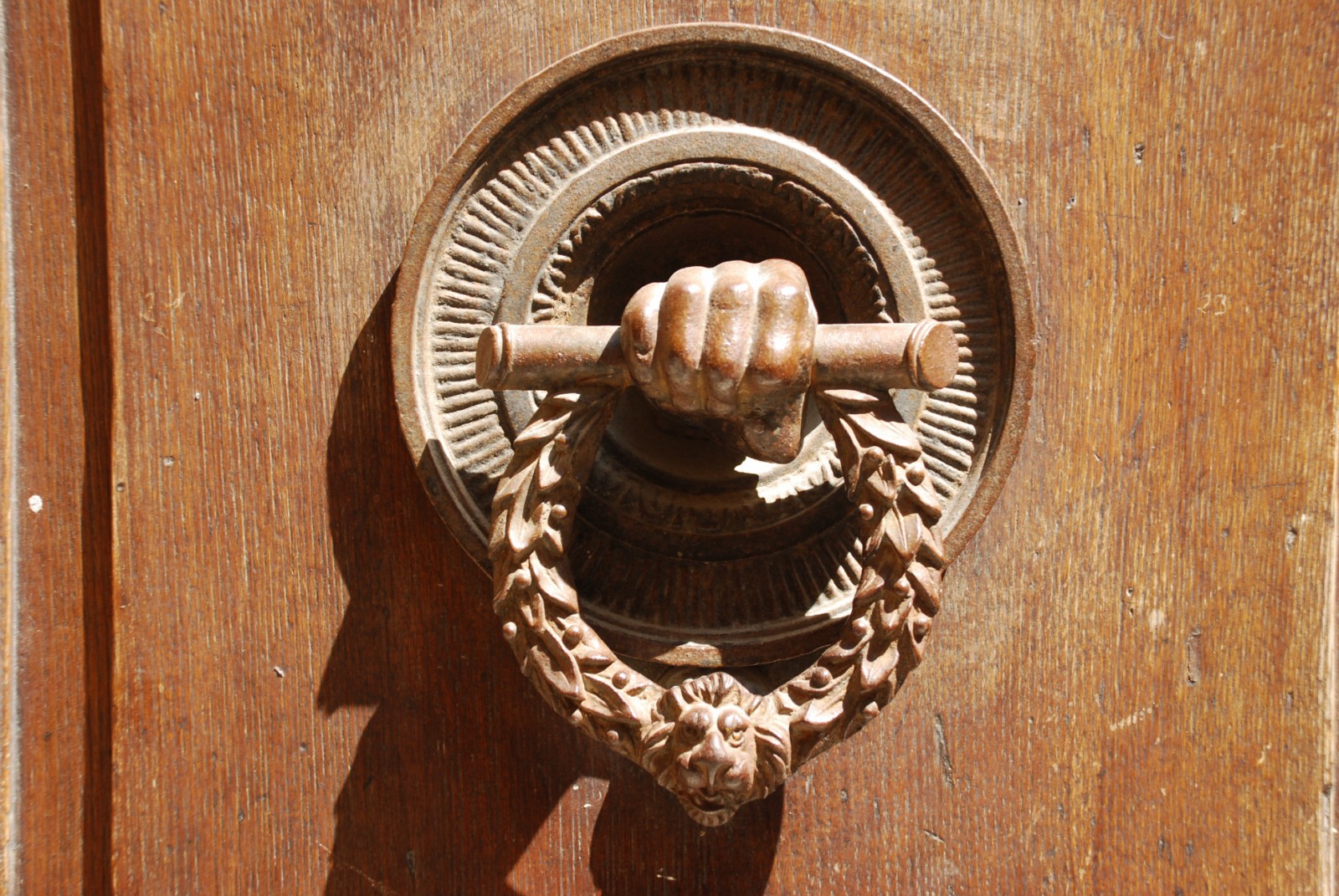 Italian Interior design: Hand Design Knocker
Italian Interior design: Hand Design KnockerAs with all other artisan products made in Italy, Italian door-knockers are a marvel of beauty and workmanship. Door-knockers are seen on old buildings all over Italy, be it castles or palaces, churches or court houses.
Lion’s Head Door Knockers
A large percentage of Italian door-knockers have the base-plate of a lion’s head, with the circular ring of the striker held by a hinge from its mouth. Such door-knockers are seen on historical buildings in Milan, Florence, Venice, Naples and other small and big towns where the remains of Italy’s rich history are seen.
Some historians believe this emblem could have something to do with a particular clan or dynasty and others or that the lion’s head performs the functions of a guardian, much like the statues of lions found all over Italy. Yet others point to the Roman appropriation of Christian symbols, and the possibility that the winged lion, symbolic of Saint Mark the evangelist could have been put on doors as protection. One can only assume that the lion symbolizes power and strength, and that having this kind of Italian door-knocker would add an appearance of magnetism and power to a house built in the style of the Italian villas or palazzos.
But this is not the only kind of door-knocker. In fact if you shop in cities like Venice, you would find a large range of door-knockers, copied from old, ornate designs. The door-knocker seen in this picture is on the door of the Palace Borromeo d’Adda in Milan, on Via Manzoni, a depiction of the coat-of-arms of the House of Borromeo, a historical noble family.
Most authentic door-knockers of value to the collectors are unique specimens, because the same mould was hardly ever used to create door-knockers for different buildings in different cities.
Classification of door-knockers
A rough classification of door-knockers can be made on the basis of their shape and the metals used.
Circular striker with ornate base plate: These are the door-knockers where the striker is a simple metal ring, perhaps given wavy ridges. The base could be a lion’s face, or a rosette, a hand, or any other simple yet aesthetically pleasing design. Most original versions of these are seen in cast iron, because of the robustness of the design.
Ornate striker with plain base plate: In these, the complete attention of the artist is given to the striker, which would have ornate designs like masks, cherubs, lyres, serpentine creatures, and so on. These are more frequently found in bronze and brass because these alloys allow for more intricacy of design.
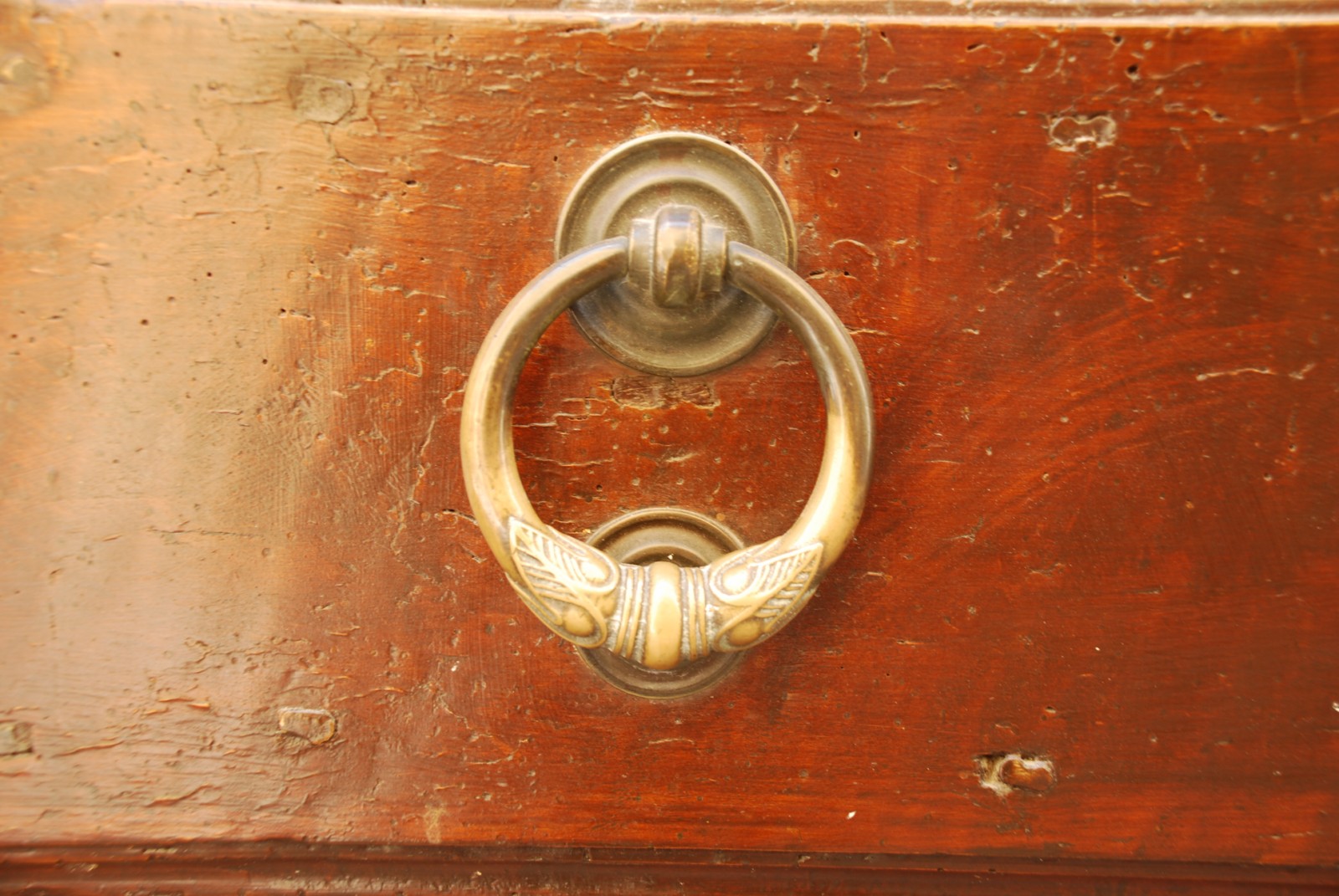 Door knocker, Italy
Door knocker, ItalyAuthentic antique Italian door-knockers can be found in curio shops in Italy, or can be ordered online. Usually the authentic ones have the ring forged to the plate, and the plate is back-mounted, which means that the door would have to be drilled to install it. But replicas of Italian door-knockers work just as well, and there is hardly much price difference between the original and the reproduction, because of low demand of door-knockers in the modern era of electric calling bells.
But if you would like a touch of history, intrigue, and even quaintness to your door, try an Italian door-knocker and you would not be disappointed.
By Damyanti Ghosh

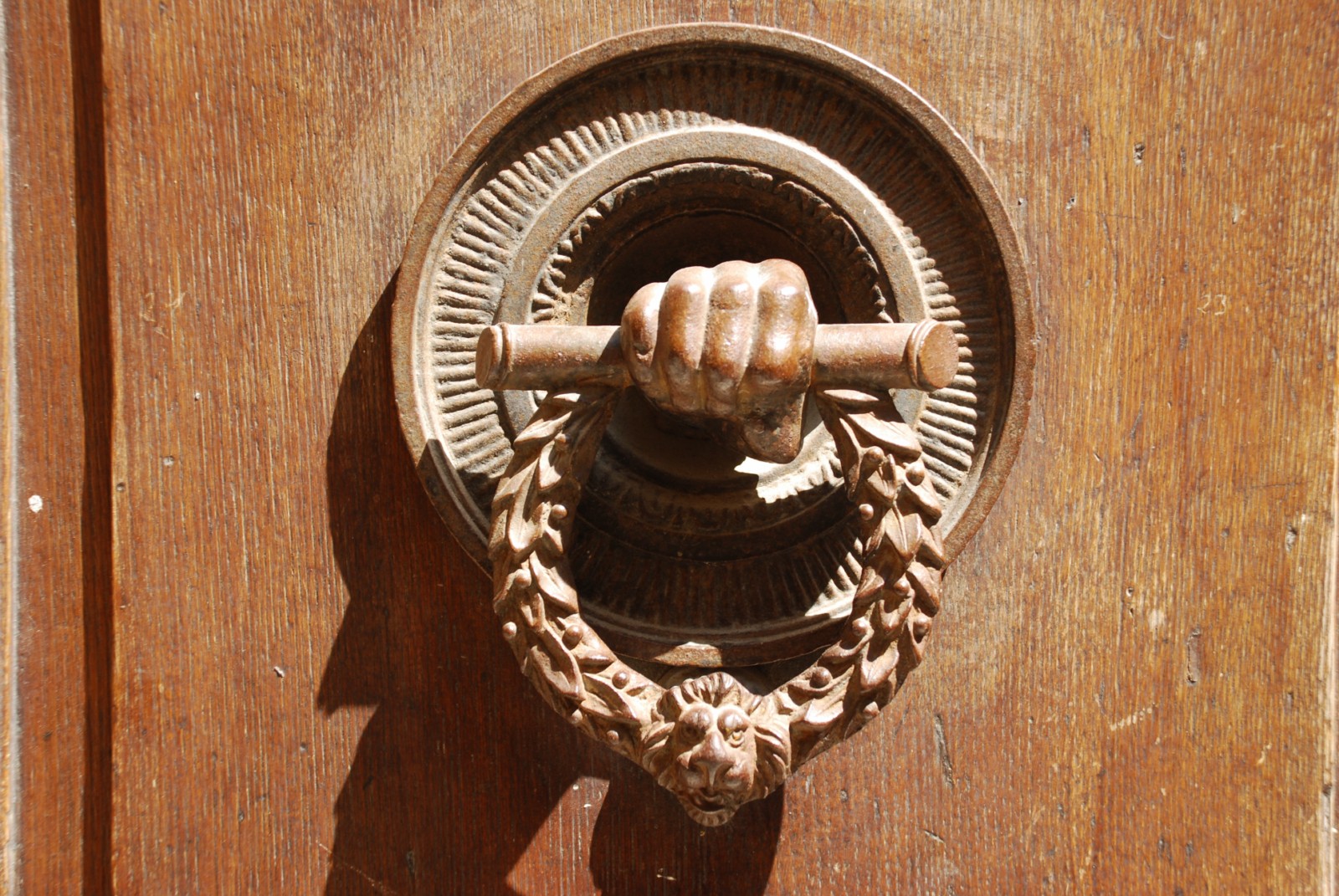
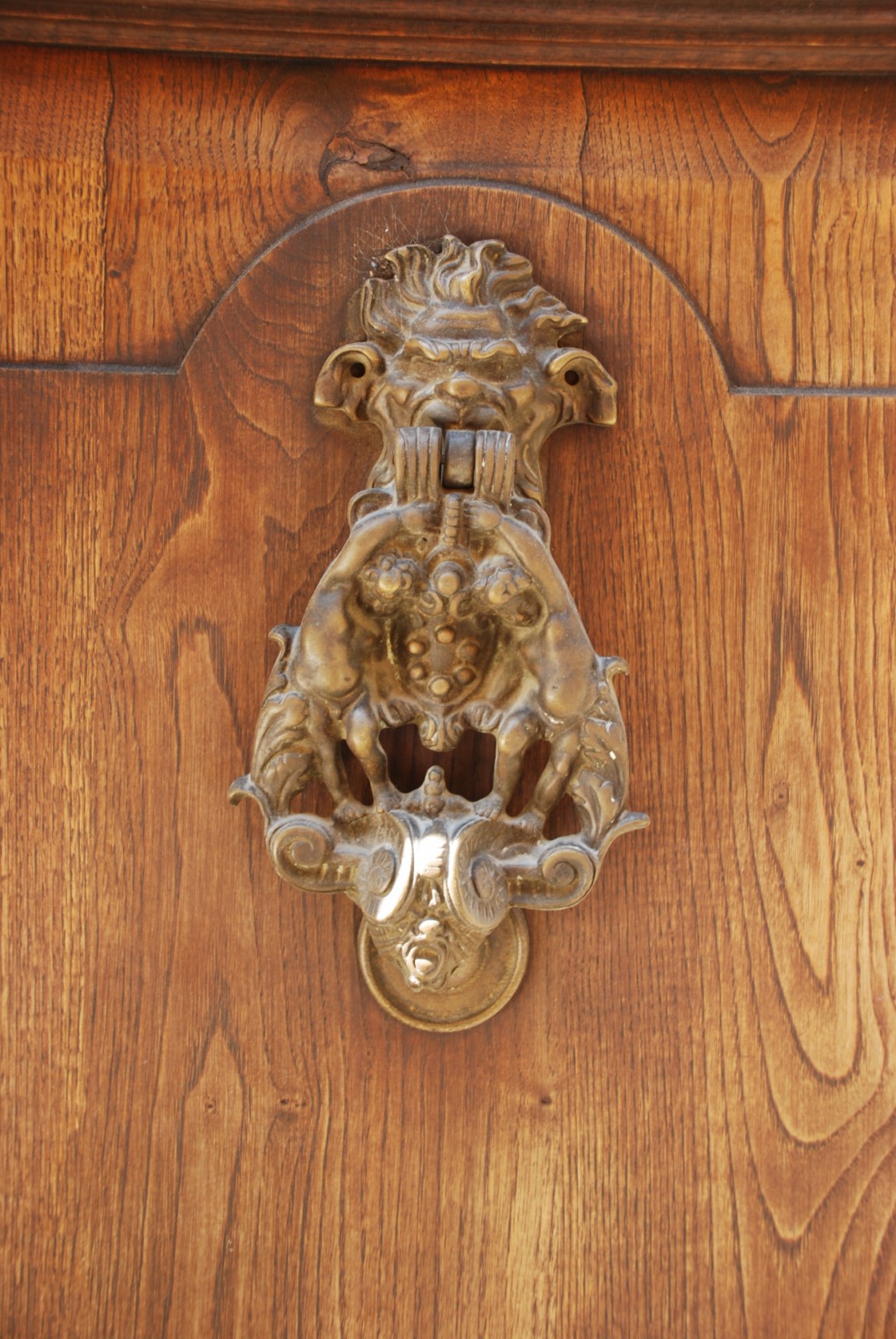











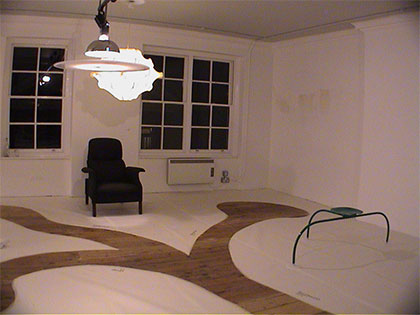






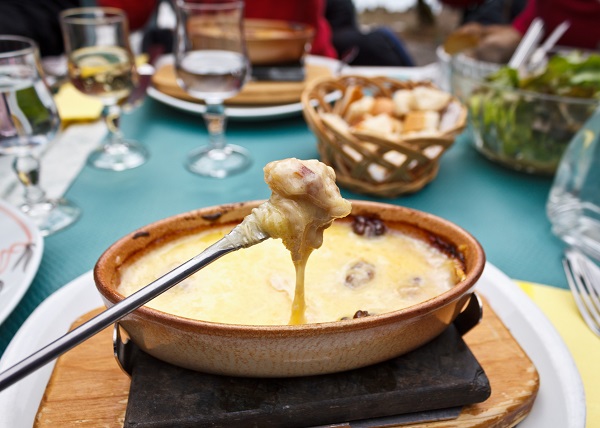
Usually in Italian GRA stands for Grande Raccordo Anulare ( Beltway ) but in this case I think it is the brand name GRA Rivadossi ( https://www.grarivadossi.com/ ).
The back plate reads made in Italy GRA. What does it mean?